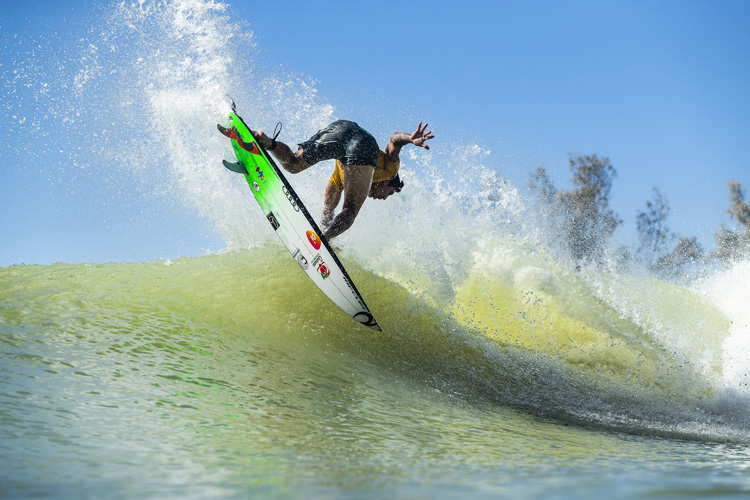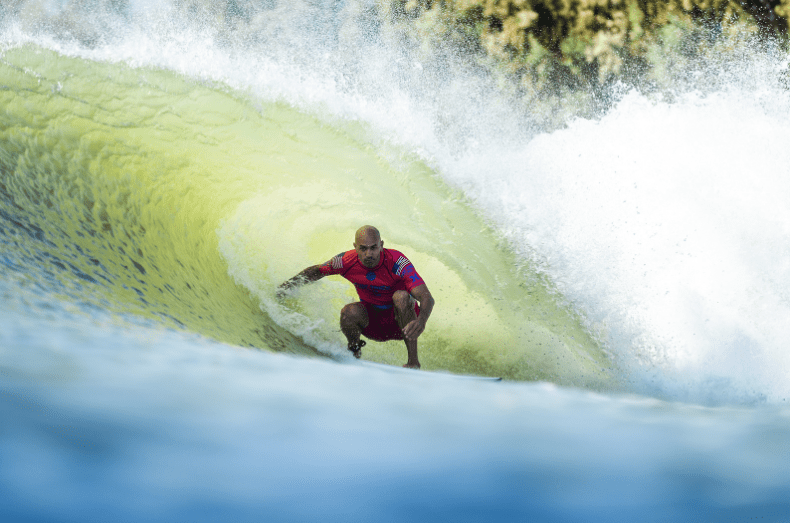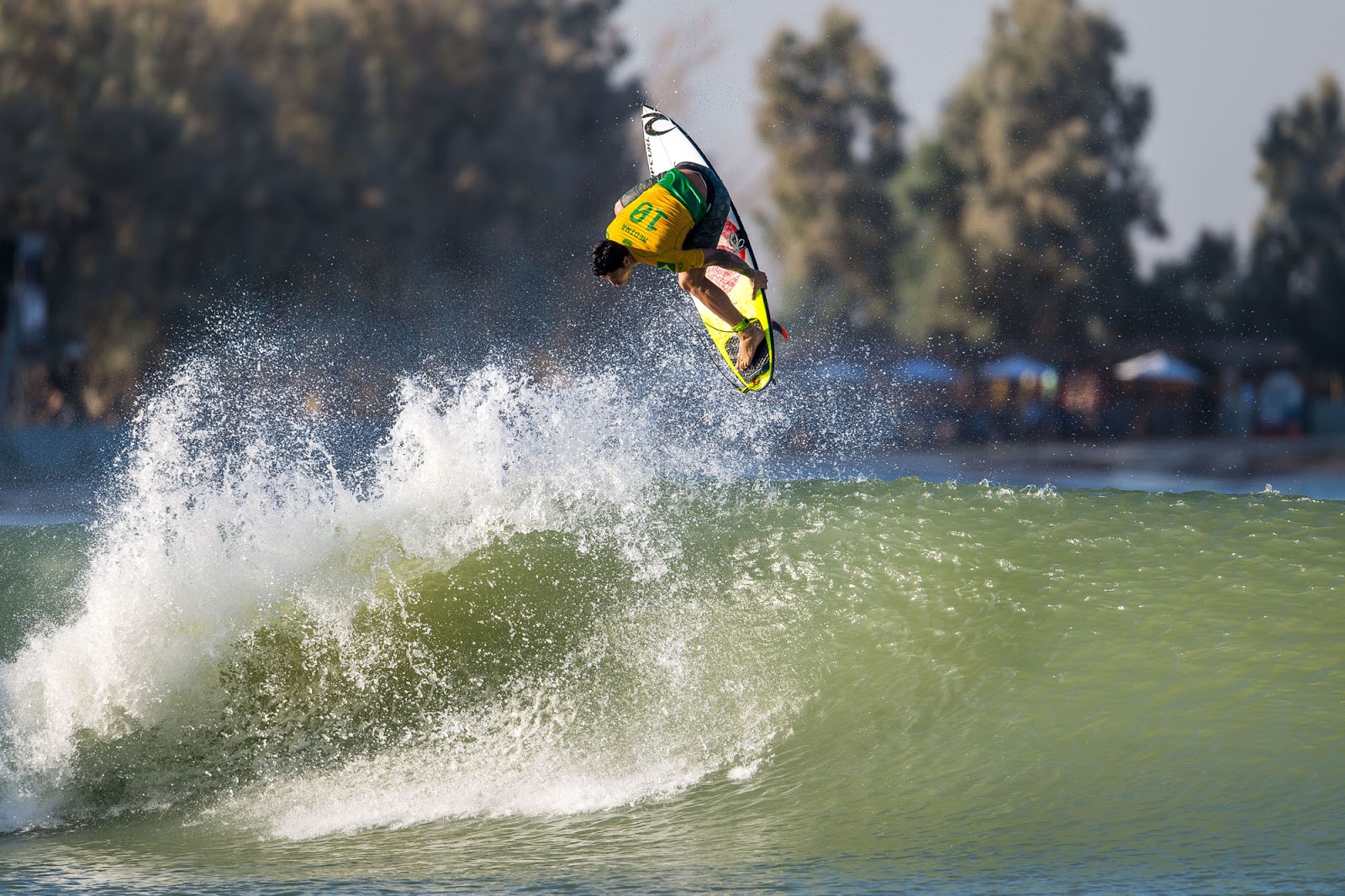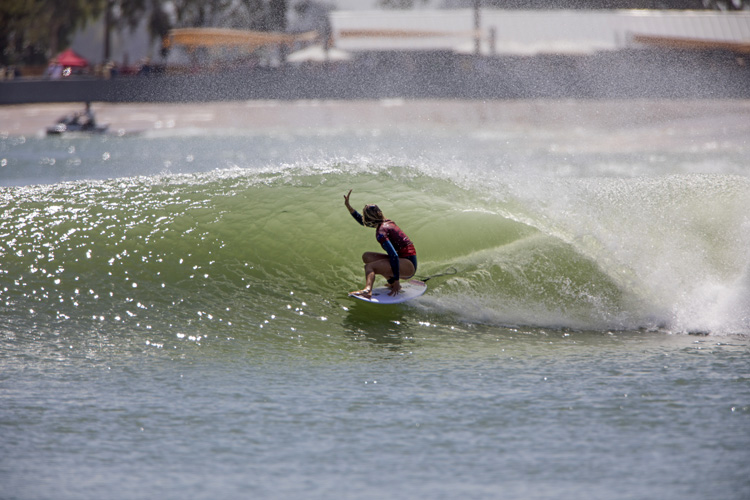Here’s How The Freshwater Pro Will Work For Patrons And Competitors
No live spectating till Saturday (unless you’re VIP); surfers complain about fewer waves, no surfing between heats, etcetera.
Don’t be fooled. The Kelly Slater Invitational Pool Party won’t get you out of work on Thursday or Friday.
Oh, no.
Because at this year’s Freshwater Pro, live spectating starts on day two of the event—Friday, September 20—and extends only to VIP ticket holders (MSRP $499).
That means on Thursday, September 19th, surfers will be wiggling their bums to a crowd of exactly zero in the heart of California’s armpit.
Then on Friday, while the WSL’s seven or eight Very Important Persons haul their sunbrellas beyond the cedar walls, regular folk like you and Jack White will be forced to take turns watching from the Stab scissor lift until finals day (Saturday), holding onto hope that your favorite surfers haven’t already been expelled from the event.
So before you squander cash (Gen ad: MSRP $55) that could be more cleverly spent on a four-and-a-half star blow-dart gun and six-pack of Coronas, let’s talk for a moment about how the Freshwater Pro will work from a logistical standpoint.

From the WSL:
Round 1 is all 36 men and 18 women;
- Normal seeding – 4 waves each
- Best left and right will form a competitors total heat score
- Brackets are 6-man heats, top 2 advance straight through to Round 2
- Leaderboard decides remaining 12 men and 12 women into Round 2
Round 2 is down to 24 men and 12 women;
- Each surfer receives an additional 2 waves to improve on their best left and right from Round 1
- Leaderboard determines surfer order
- Top 8 men and 4 women from Leaderboard advance to Final
Final of 8 men and 4 women;
- Each surfer rides 4 waves
- Only the top 4 men and 2 women from the Leaderboard receive an extra 2 waves
- Best left and right form the surfers’ total score and decide the Champions

It took me several minutes to figure out what the h-e-double-fuck the WSL was talking about here, but I think I’ve finally got it. For ease of math, let’s just focus on the men.
Here’s what I figured:
Surfers will ride waves in reverse order of their CT ranking, meaning the lowest-rated wildcard will go first. Assuming it’s like last year, surfers will ride a left then a right consecutively, after which the next lowest-rated surfer will get their turn. This goes on for a looooong ass time until each surfer has ridden four total waves (two lefts, two rights).
Here’s where it gets interesting.
It appears the WSL has implemented a new bracket system—surfers will be clumped into six groups of six—to determine advancements.
Logic dictates that the seeds will be “evenly” distributed amongst the brackets, meaning that Group 1 could look something like: seed 1, seed 8, seed 15, seed 22, seed 29, seed 36; and Group 2 might be: seed 2, seed 7, seed 14, seed 21, seed 28, seed 35. (This is just an example—I’m not actually sure how it works nor do I care enough to investigate it at this juncture.)

Because the top two surfers from each bracket automatically advance to Round 2, a surfer can either get lucky or unlucky with their draw.
For example, let’s say in Group 1 that the lowest two-wave total is 14, and then in Group 2, the highest two-wave total is 13.
Despite having lower scores than the last-place finisher in Group 1, the first- and second-place finishers in Group 2 will still automatically advance to the Second Round. Meanwhile, surfers who place 4-6 in Group 1, despite having higher scores than those competitors who advanced through Group 2, will have to hope that they advance via the outright leaderboard (meaning that they are not in the bottom-12 total scores for Round 1).
If my interpretation of the bracket system is correct, the logic behind it is shaky.
The idea of having isolated “heats” in ocean surfing is completely sensical, as conditions change throughout the day, making it more or less difficult to achieve certain scores at certain times. For this reason, ocean-based competitors should only be compared to those surfing at exactly the same time.
However in a pool, where everyone is surfing the exact same waves hour after hour, day after day, there’s no reason why the WSL should compare six people arbitrarily against one another, versus just having the entire field compete straight-up for the highest two scores.
A possible, albeit unlikely, result of this format is having a surfer with a two-wave total of 11 advance to Round 2, while a surfer with 12 total points is eliminated.

The competitors, meanwhile, are upset over entirely separate issues, being that they “don’t have enough chances” to surf the wave, either in competition or freesurfs.
This is a fair enough complaint, as getting just two lefts and two rights in the pre-event warm-ups (what we’ve been told the surfers receive in the days leading up to the event) and another two lefts and two rights in the opening round—with half of those waves counting toward their qualifying total—is a pretty daunting task, but at the same time, this is simply what the Slater pool allows.
The Ranch’s train system can create one clean wave every four minutes, meaning that if the surfers want more chances to ride waves, the WSL would either have to eliminate Round 2 (as they did last year, which of course sparked its own complaints) or spend more time in Lemoore, which would probably lead to some form of mass psychosis.
The casino. The heat. The inescapable aroma of cow dung. It’s just too much for a sane mind to take in long intervals. Perhaps that’s why one Tour surfer is flirting with the idea of forgoing one of her pre-event “warm-up” sessions at the Ranch (which includes unfettered access to two whole waves!) for a couple of hours in the Waco wave machine.
A reasonable trade, we’d say.
Anyway, starting in Round 2, the brackets dissolve and the remaining 24 surfers get one more left and one more right each, which will be included with their opening four rides. Following Round 2, the competitors with the top-8 (left+right) two-wave totals from their opening six waves will advance to the finals, where scores are reset.
From there it’s four waves apiece, with the top four (left+right) two-wave totals earning an extra right and left to be included with their opening four rides. At that point, whoever has the highest (left+right) two-wave total from those six waves, wins.
And you know who isn’t complaining about the new format? Brazilians, and the old man who owns the joint.
Because at the end of the day, the pool is an equalizer. It finds the best, most level-headed, and most experienced talent (in mechanical three-footers) every single time. So really, complaints about the competition structure are just complaints about your own surfing or competitive acumen.
Our recommendation: surf the wave to the best of your ability and see where it gets you. Because there’s really nothing else you can do.














Comments
Comments are a Stab Premium feature. Gotta join to talk shop.
Already a member? Sign In
Want to join? Sign Up